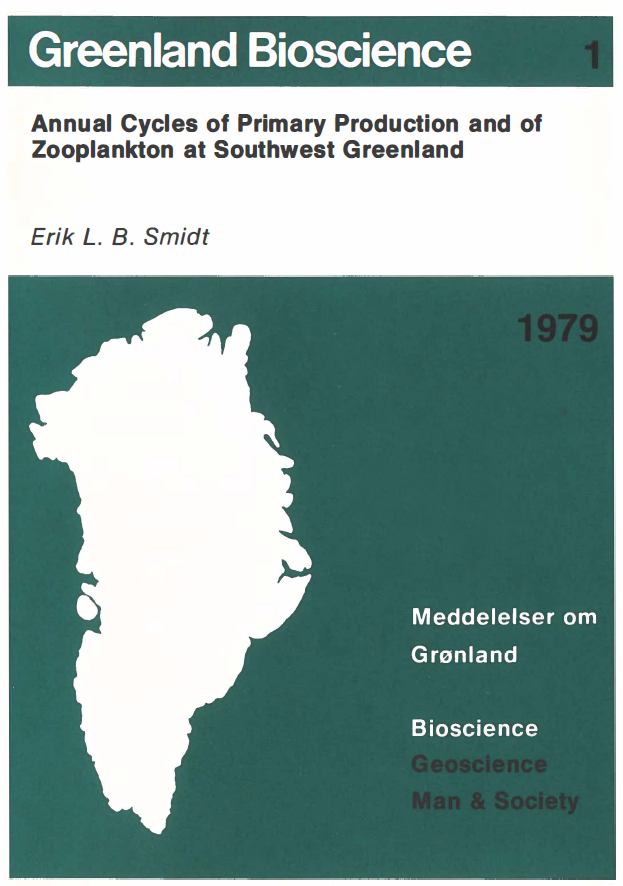Annual cycles of primary production and of zooplankton at Southwest Greenland
DOI:
https://doi.org/10.7146/mogbiosci.v1.142178Abstract
Annual hydrographic observations, measurements of primary production, and sampling of zooplankton were undertaken in Southwest Greenland waters in the 1950s and -60s. In the coastal area and at the entrance to Godthåbsfjord winter cooling normally extends to the bottom, resulting in a vertical mixing of the water and an effective replenishment of nutrients at the surface. The subsequent production rate is, therefore, high with an average annual gross production calculated to about 160 g C m-2. In the inner fjord regions the stratification is normally much more stable with persisting warm bottom water, and the production is, therefore, lower here than in the coastal area. The seasonal variation in the relations between daylight, primary production, phosphate, and quantity of zooplankton is, presumably, representative of the coastal waters at SW Greenland. A maximum in primary production in spring is normally followed by another maximum in late summer. The number of animals in the microplankton samples from the upper 30 m (the productive layer) is at its maximum simultaneously with the second maximum of the primary production, while the maximum of the macroplankton biomass (taken by stramin net) extends until late autumn in the coastal and outer fjord regions.
A maximum of the macroplankton biomass during winter in the deep water layers in the inner Godthåbsfjord, caused by inflow of warm bottom water, stable stratification and cooled outflowing surface water acting as a barrier to the ascent of the animals, is assumed to be normal to the open, non-threshold, W Greenland fjords.
Seasonal vertical migration of the zooplankton is indicated by Hensen net hauls from different depths. There is a concentration of zooplankton in the upper water layers in April-September and a deeper concentration from autumn to spring.
Annual cycles of various animal groups are described for holoplankton and meroplankton, separately. Holoplankters are normally dominant, copepods being the most numerous group. Meroplankters, especially bottom invertebrate larvae, are relatively numerous in the microplankton in spring and summer with Ba/anus nauplii dominant in spring and lamellibranch larvae in the following months. In a special section on fish eggs and larvae it is shown i.a. that cod eggs and larvae are normally concentrated in the upper 50 m, where they are much exposed to temperature variations, while eggs and larvae of American plaice occur also in deeper water. This may partly explain why the cod stock is more vulnerable to low temperatures.
It is shown that the epipelagic plankton fauna in the survey area in terms of growth and mode of development is more similar to the arctic than to the boreal fauna. It could therefore be termed subarctic, which also corresponds to the environmental conditions in the area.

Downloads
Published
Issue
Section
License
Coypyright by the authors and the Commision for Scientific Research in Greenland / Danish Polar Center/Museum Tusculanum Press as indicated in the individual volumes. No parts of the publications may be reproduced in any form without the written permission by the copyright owners.

